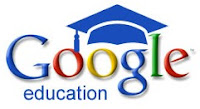As expected, the UW Regents moved forward Friday, approving the proposal from the UW-Madison Administration to raise the cap on out-of-state enrollment even though it hadn't been vetted through proper shared governance channels. The cap was moved from 25% to 27.5%, rather than to 30% as requested.
In typical style, everyone involved acted like this represented the wise, informed choice arrived at through careful decision-making. Of course, we have real choices given the "new normal," a context so normalized at this point that the vast majority of our campus intellectuals can't even see that "normal" is a political agenda.
But as I constantly work to help my students understand, there is
always a choice. And the lack of careful thought being paid by the state and its universities to this particular choice could easily come at the expense of Wisconsin residents. Sure, there are other options. Let's consider the range of possibilities.
Assumptions1. Unless explicitly noted, each scenario below works with the previously existing 25% cap on OOS to adjust the student body to achieve greater diversity and/or greater revenue for UW-Madison. You could do the same exercise with 27.5% percent.
2. I illustrate three dimensions of diversity here-- socioeconomic (via %Pell), national geographic (via OOS), and international. Of course there are others, but not knowing, for example, the % of racial/ethnic minorities within each current category of students I couldn't do the modeling (for example, what % of WI residents at Madison are racial/ethnic minority now?) It would help if that sort of thing were publicly available.
3. Since the %Pell is a characteristic often recognized in rankings and accountability metrics, I consider it by applying it to Wisconsin residents only. This could be an error-- if, for example, a sizable proportion of Madison's Pell enrollment comes from OOS. I strongly suspect this isn't the case, however, given that college choices of Pell students tend to be geographically constrained and Pell recipients are more expensive for the university's budget (e.g. because they require more institutional aid).
4. I assume, unless explicitly noted, that MN students count as "residents" when computing the cap since that's the rule.
5. I assume that international students are less expensive than other students because they do not qualify for financial aid.
6. I assume that it
is possible to increase the proportion of Pell recipients and international students
without diminishing the academic preparedness standards of the institution. This can be achieved in several ways: (a) Waiving the ACT requirement for all or some students -- for example it could be waived for Wisconsin residents. The ACT is predictive of freshman year GPA and very little else-- it is not a useful assessment of how capable individuals are of succeeding at UW-Madison. (b) Recruiting in low-cost ways in a variety of additional countries, rather than focusing on a single nation or small set of nations with a limited pool. Anyone rejecting this contention should be asked to provide evidence to the contrary- -rather hard given the many studies showing the sizable pool of high-ability low-income students currently not in college.
Where things stand nowThis is approximately the current distribution of UW-Madison students. The percent Pell is slightly off (around 12%) but it has bumped around in minor ways for years. The main points are that (a) %Pell is well below that of our peer institutions (there's a nice paper by Bob Haveman of LaFollette on this), (b) Wisconsin residents are just 63% of the total now, even with the 25% cap, (c) international students are a small fraction of our allowable OOS enrollment, and (d) MN residents are dramatically overrepresented among U.S. students from outside Wisconsin.
Chart 2 shows that under the existing 25% cap, we could increase diversity
and raise additional revenue by (a) reducing the percent of OOS students from the U.S. and increasing the representation of international students and (b) reducing the percent of WI residents who don't qualify for the Pell Grant and increasing the percent of students on the Pell grant (which would require some of the revenue from the international students, and a relaxation of our admissions focus on the ACT score).
Chart 3 shows that the previous cap was insufficiently specified to protect a UW-Madison focus on Wisconsin residents, and the new cap doesn't do this either. The new cap requires 200 additional seats for WI residents but this could be done by expanding overall enrollment-- the proportion WI resident could still decline. Thus, it would be possible for the % Wisconsin (and the %Pell) to decline below 50%, and the % international to fully replace the % OOS-- if Madison so chose.
Of course, the scenario in Chart 3 isn't
likely in the near future-- though it is
possible. I think that instead we are moving towards Chart 4 by growing enrollment a bit. This is a more diverse campus in that it's more international, and national diversity is increased a bit by trading MN students for WI students, and it raises revenue. But it does nothing to increase the socioeconomic diversity of the institution. (After all, the constituency for that group, I'm told, amounts to me and my friends.) Heck, why not go for 0% Pell while you're at it, and maximize the heck out of students' dollars?
That would lead you closer to Chart 5-- still allowable under the prior and current caps, as long as overall enrollment grows. We can let in more MN students, and cut WI representation, and diversify further through more international enrollment. Nothing really to stop us, especially if we're headed for lots of online classes.
Finally, let me leave you with what I think is fairly close to the optimal scenario. This one does require a change, but it's one that the Regents
should like. If the goal of the cap is to protect seats for WI students, then we should count MN students as the out-of-state students they are. We can keep reciprocity while doing this (though one should ask-- why?). But it requires a change to the cap, since MN -- currently not counted-- would count towards it. Under this scenario, we could diversify both in terms of U.S. states and internationally, and use the increased revenue to increase socioeconomic diversity by increasing the %Pell. The current % Wisconsin remains the same. That's a change to the cap that would have made plenty of sense and given Madison administration more wiggle room without endangering enrollment among WI residents.
These are just a handful of options. Each one reflects a different composition of the student body. It is for that reason that
any efforts to alter the constraints we face should be fully vetted through shared governance. Constraints both help and hinder us-- they help us focus in the face of temptation, and when badly specified they prevent us from doing actual and real good.
Before Madison administrators sought changes from the Regents, they should have been required to show their cards-- which of these scenarios are they after? Why should we imagine they plan to give primary responsibility for these academic decisions to their faculty, staff, and students-- even though it's specified in Chapter 36.09? After all, remember, they feel they "have no choices."































